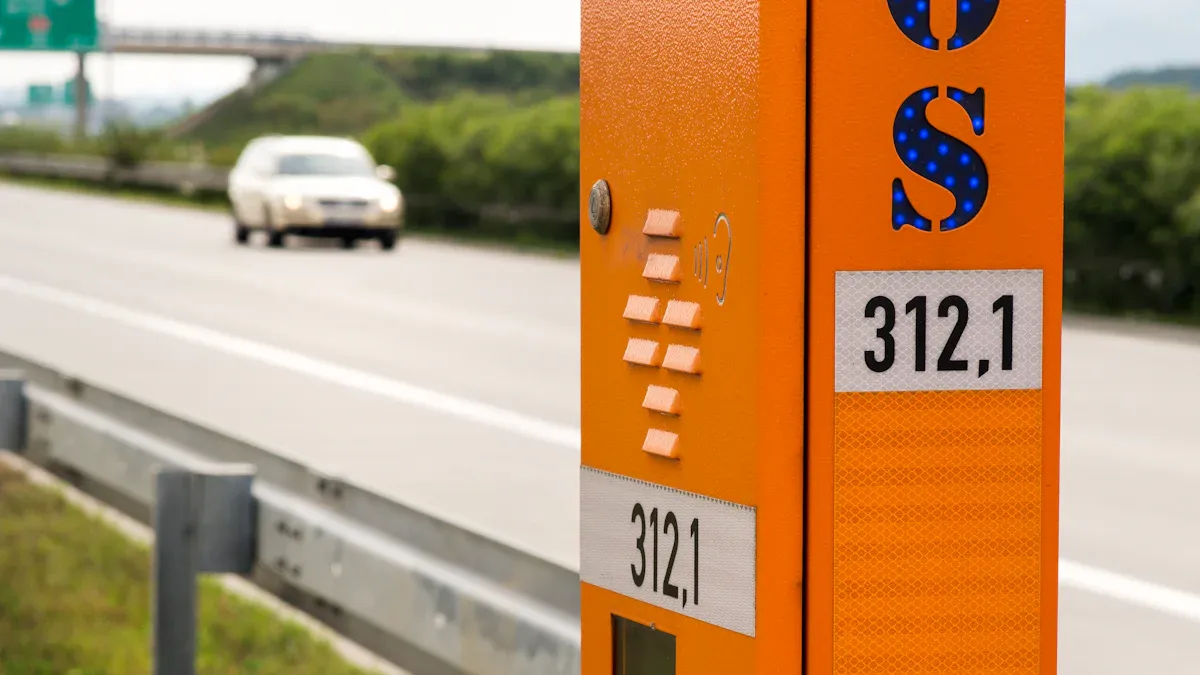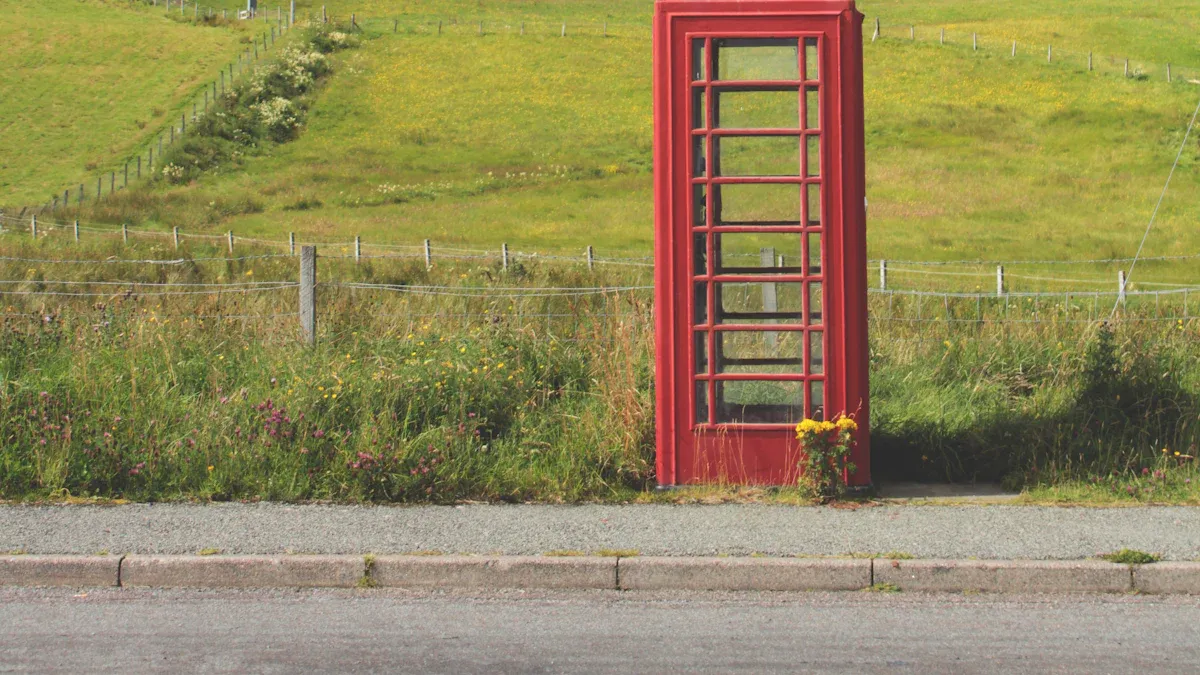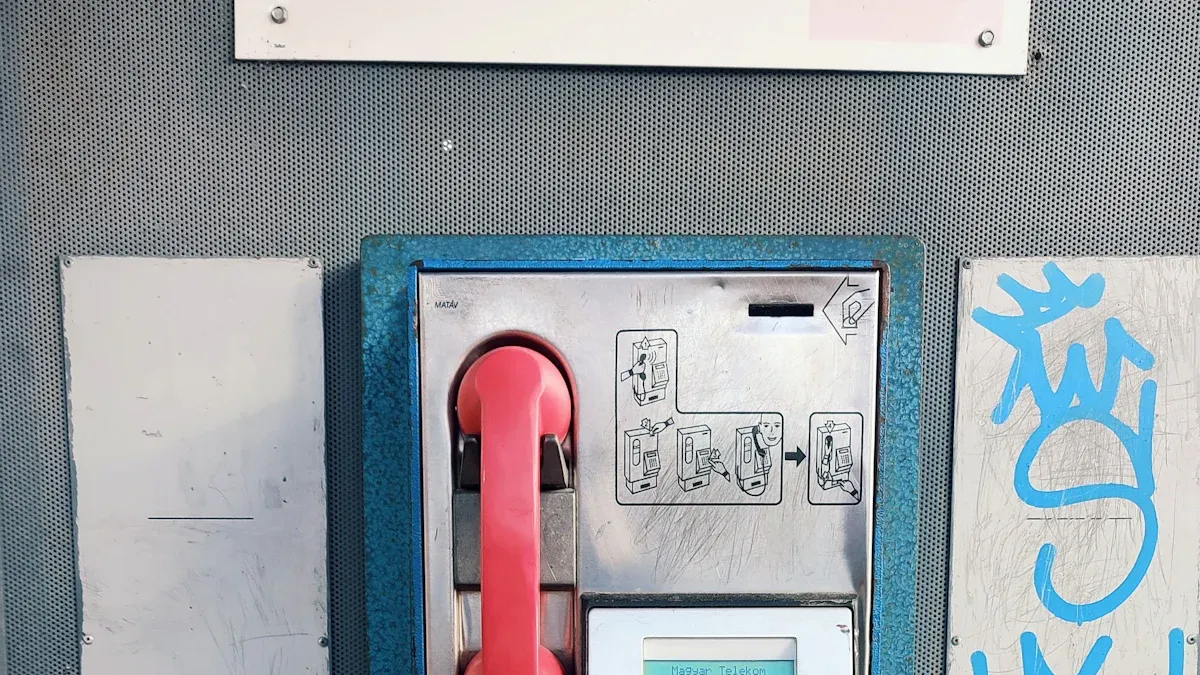
Remote roadways often face unique challenges during emergencies. Geographical barriers like mountains or forests can weaken signals, making communication difficult. Many areas lack infrastructure, such as cell towers, which delays emergency responses. Devices like a traffic emergency telephone or an emergency tunnel telephone ensure reliable communication. Their durability and functionality are critical, especially in harsh conditions. Power limitations can also hinder operations, so options like solar-powered rugged emergency telephones or mining explosion proof telephones provide dependable solutions. These devices save lives by bridging communication gaps when it matters most.
Why Traffic Emergency Telephones Are Essential

Enhancing Safety in Remote Areas
Remote roadways often lack reliable communication options. This makes it harder for travelers to get help during emergencies. A traffic emergency telephone provides a dependable way to call for assistance. These devices are designed to work in areas where cell phone signals fail. They ensure that people can connect with emergency services quickly.
Weather conditions in remote areas can be unpredictable. Heavy rain, snow, or extreme heat can make roads dangerous. A traffic emergency telephone remains functional in these harsh environments. Its durable design ensures it can handle tough conditions. This reliability helps reduce risks for drivers and passengers.
팁: Installing these telephones at regular intervals along remote roads can improve safety for everyone.
Supporting Emergency Response and Rescue Efforts
When accidents happen in isolated areas, every second counts. A traffic emergency telephone allows users to report incidents immediately. This speeds up the response time for rescue teams. Emergency services can locate the caller faster and provide the necessary help.
These telephones also play a key role during natural disasters. For example, during floods or landslides, they offer a lifeline for stranded individuals. Their ability to function without relying on mobile networks makes them invaluable in such situations.
By ensuring clear and reliable communication, these devices save lives. They bridge the gap between those in need and the help they require.
Key Features of a Reliable Traffic Emergency Telephone
Weather Resistance and Waterproof Ratings
A reliable traffic emergency telephone must withstand harsh outdoor conditions. Rain, snow, and dust can damage devices that lack proper protection. High IP ratings, such as IP66, ensure strong resistance to water and dust. This makes the telephone functional even during storms or in dusty environments. Compliance with standards like EN 50121-4 guarantees electromagnetic compatibility, which is essential for uninterrupted operation in areas like railways. These features ensure the device remains dependable, no matter the weather.
팁: Always check the IP rating before choosing a telephone for remote roadways.
Power Options: Solar, Battery, or Wired
Power reliability is crucial for emergency telephones in remote areas. Solar-powered options are ideal for locations with abundant sunlight. They reduce the need for frequent maintenance and work independently of electrical grids. Battery-powered models offer flexibility and portability, making them suitable for temporary installations. Wired telephones, on the other hand, provide consistent power but require proper infrastructure. Choosing the right power option depends on the specific needs of the location.
Connectivity: Wired, Wireless, or Satellite
Connectivity determines how well the telephone communicates with emergency services. Wired connections are stable but may not be feasible in remote areas. Wireless options are easier to install and maintain but depend on network availability. Satellite connectivity offers the most reliable communication in isolated regions. It ensures the telephone works even in areas without cellular coverage.
Visibility and Accessibility Features
Emergency telephones must be easy to spot and use. Bright colors like yellow or orange improve visibility, especially in low-light conditions. Large buttons and clear instructions make the device user-friendly. Some models also include Braille for visually impaired users. These features ensure that anyone can operate the telephone during an emergency.
Types of Traffic Emergency Telephones for Remote Roadways

Solar-Powered Telephones
Solar-powered telephones are a great choice for remote roadways. They use sunlight to generate power, making them eco-friendly and cost-effective. These telephones work well in areas with plenty of sunlight. They don’t rely on electrical grids, so they’re perfect for isolated locations. Once installed, they require minimal maintenance, which saves time and money.
참고 : Solar-powered models may not perform as well in regions with limited sunlight. Always consider the local climate before choosing this option.
These telephones often come with backup batteries. This ensures they stay operational during cloudy days or at night. Their durability and independence make them a reliable solution for emergency communication.
Wired Telephones
Wired telephones offer consistent and stable performance. They connect directly to a power source and communication network. This makes them highly dependable, especially in areas with existing infrastructure. Unlike wireless options, they don’t face issues like signal interference or network outages.
However, installing wired telephones in remote areas can be challenging. It requires laying cables, which might not be feasible in rugged terrains. Despite this, they remain a solid choice for locations where infrastructure is already in place.
Wireless Telephones
Wireless telephones are versatile and easy to install. They don’t need cables, which makes them ideal for remote roadways. These devices rely on cellular or satellite networks to function. Satellite-based models are particularly useful in areas without cellular coverage.
Wireless telephones are portable and can be relocated if needed. This flexibility makes them a popular choice for temporary setups or areas with changing needs. However, their performance depends on network availability, so it’s important to assess the coverage in the area.
Installation and Maintenance Tips
Ease of Installation in Remote Locations
Installing a traffic emergency telephone in remote areas can be challenging. The terrain is often rugged, and access to power or communication lines may be limited. Choosing a model that suits the location simplifies the process. For example, solar-powered or wireless telephones are easier to install because they don’t require extensive infrastructure.
Placement is another important factor. Telephones should be installed at regular intervals along the roadway. This ensures they are accessible to travelers in emergencies. Using mounting poles or enclosures designed for harsh environments can make installation quicker and more secure.
팁: Always plan the installation during favorable weather conditions to avoid delays and ensure safety.
Maintenance Requirements and Longevity
Regular maintenance keeps emergency telephones functional for years. Routine tasks include testing the device to ensure it works properly and inspecting it for damage. Cleaning the enclosure prevents dirt and debris from affecting performance. Checking for signs of wear, like rust or loose parts, helps identify issues early.
These simple steps extend the lifespan of the telephone. They also reduce the risk of failure during emergencies. Scheduling maintenance checks every few months ensures the device remains reliable, even in harsh conditions.
Ensuring Long-Term Reliability
Long-term reliability depends on consistent upkeep and quality materials. Regular testing ensures the telephone operates as expected. Inspections verify that all components are in good condition. Cleaning the enclosure and addressing wear and tear prevent small problems from becoming major issues.
Using durable materials like stainless steel or weather-resistant coatings also improves reliability. These materials protect the telephone from extreme weather, ensuring it stays operational when needed most.
참고 : Investing in high-quality models may cost more upfront but saves money in the long run by reducing repair and replacement costs.
Balancing Cost and Quality
Evaluating Long-Term Value and ROI
Choosing the right traffic emergency telephone involves more than just the upfront cost. It’s essential to consider the long-term value and return on investment (ROI). A high-quality device may seem expensive initially, but it often saves money over time. Durable materials and reliable performance reduce repair and replacement costs. This makes it a smarter choice for remote roadways where maintenance can be challenging.
Another factor to evaluate is energy efficiency. Solar-powered models, for instance, eliminate electricity bills and require minimal upkeep. These savings add up over the years, making them a cost-effective solution. Additionally, reliable connectivity ensures faster emergency responses, which can prevent costly delays or accidents. Investing in a dependable device ultimately enhances safety while delivering financial benefits.
팁: Compare the total cost of ownership (TCO) for different models to identify the best long-term option.
Tips for Budget-Friendly Options Without Compromising Safety
Finding a budget-friendly traffic emergency telephone doesn’t mean sacrificing quality. Start by prioritizing essential features like weather resistance, visibility, and reliable connectivity. Avoid paying extra for unnecessary add-ons that don’t contribute to safety or functionality.
Consider refurbished or certified pre-owned models from reputable manufacturers. These options often provide the same reliability as new devices at a lower cost. Bulk purchasing can also lead to discounts, especially for large-scale installations.
참고 : Always verify the warranty and support services before buying. A good warranty ensures peace of mind and reduces unexpected expenses.
Lastly, opt for models with low maintenance requirements. Devices with durable enclosures and self-sustaining power sources, like solar panels, minimize upkeep costs. This approach ensures safety without breaking the budget.
Choosing the right traffic emergency telephone can make a life-saving difference on remote roadways. Prioritizing durability, functionality, connectivity, and cost-effectiveness ensures the device performs reliably when needed most.
To select the best option, consider these features:
- Materials like aluminum alloy or stainless steel for weather resistance.
- Noise-canceling technology for clear communication.
- LED indicators for visual alerts in noisy areas.
- Hands-free operation for emergencies.
- Tamper-proof designs to prevent vandalism.
Matching these features to the specific needs of the location guarantees safety and long-term value.
제품 정보
1. How often should traffic emergency telephones be tested?
Testing every three to six months ensures reliability. Regular checks help identify issues early and keep the device functional during emergencies.
팁: Schedule tests during routine maintenance to save time.
2. Can solar-powered telephones work at night?
Yes, most models include backup batteries. These batteries store energy during the day, allowing the telephone to function even after sunset.
참고 : Always verify the battery capacity before purchasing.
3. What is the ideal distance between emergency telephones on remote roads?
Install telephones every 1-2 miles for optimal accessibility. This spacing ensures travelers can reach a device quickly during emergencies.
팁: Adjust the distance based on road conditions and traffic volume.


